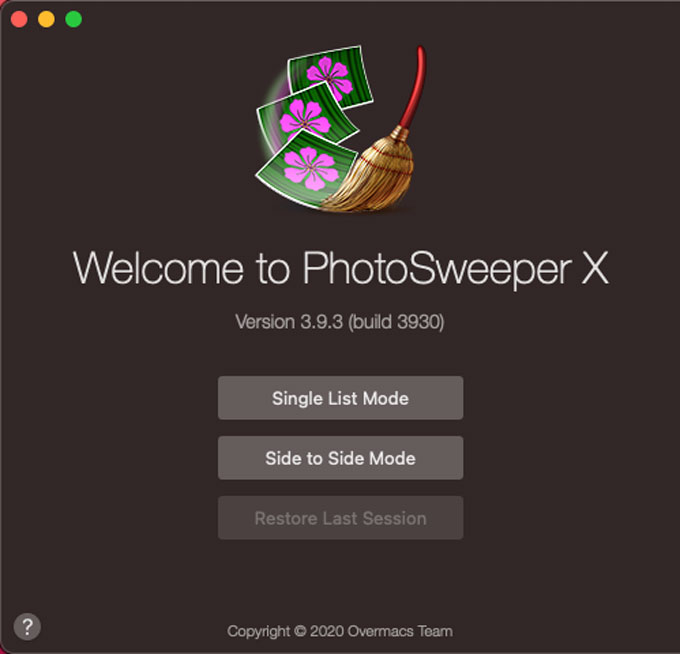

- PHOTOSWEEPER ICON FLAT HOW TO
- PHOTOSWEEPER ICON FLAT MANUAL
- PHOTOSWEEPER ICON FLAT FULL
- PHOTOSWEEPER ICON FLAT PLUS
You can even search and navigate to any folder on your hard drive too. With PhotoSweeper, it doesn’t matter where you store and organize your photos since it supports iPhoto, Aperture, and Lightroom libraries. While this practice almost always helps you get the results you want, it also results in lots of cleanup duty on your Mac later. If you’re anything like me, you most likely take many photos in order to get the perfect one. Read more about duplicate, iphoto, Lightroom, Photos, PhotoSweeper, remove.PhotoSweeper for PCs really only has one main goal, and that’s to help you clean up unwanted duplicate or like photos from your Mac, no matter where they’re hiding. PhotoSweeper is a one-trick pony, but it provides a user-friendly way to scan large photo libraries, identify and remove duplicate photos. This would include photos taken using Burst Mode as well as other photos that you took rapidly as you were trying to capture some action. The result should be photos that were taken seconds apart and are nearly identical. I suggest you set the Time Gap to Less Than 3 Seconds and then leave the Matching Level close to Exact. Then let PhotoSweeper perform its comparison. The Similar Photos option then lets you adjust the Time Gap and Matching Level. This time, however, in Step 7 select Similar Photos. Next, you’ll want to return to steps 6-13 to perform a second comparison of photos in your Photos Library.Instead, it moves them into an Album named Trash (PhotoSweeper). You can control-click on this Album and select Delete Photos to truly get rid of them. PhotoSweeper doesn’t immediately delete the photos. You’ll likely be prompted to open Photos and select the All Photos album.Once you’ve reviewed all groups of photos then click the Trash Marked button in the lower left corner.To change a photos marking simply click on it, as indicated. In each group you’ll see which photo(s) are marked in red.One-by-one, click on each group of duplicate photos listed on the left-hand side to review the photos.You should see a window like the one shown above.Click the Auto Mark button, to permit this. When PhotoSweeper finishes doing its comparison, it’ll likely ask you if you want it to Auto Mark photos.For this first pass, select the Duplicate Files option.Comparisons can take quite a long time depends upon how many photos you have From the Media Browser window drag your Photos Library into the PhotoSweeper window.
PHOTOSWEEPER ICON FLAT PLUS
Open PhotoSweeper on your Mac and click the Media Browser button, then click the plus sign button, select your Photos Library.Get the app downloaded and installed on your Mac. Buy a copy of PhotoSweeper, currently $10, from either the AppStore or the PhotoSweeper web site.It can’t be open or in use while you’re using PhotoSweeper
PHOTOSWEEPER ICON FLAT FULL
Before you begin, make sure you have a full backup of your Photos Library.You can get a detailed PhotoSweeper user manual. I am going to assume you are using Apple’s Photos application, but PhotoSweeper works with iPhoto 9.x, Aperture 3.x, Adobe Lightroom 3.x and newer as well as Capture One 8.x and newer.
PHOTOSWEEPER ICON FLAT HOW TO
Here’s an overview of how to use PhotoSweeper. Using this feature you can find photos taken a few seconds apart or photos taken using Burst Mode on your iPhone. In addition to identifying exact duplicate files, it also lets you find very similar photos. PhotoSweeper will locate all duplicate photos and makes it easy for you to review them and select which ones you want to delete.
PHOTOSWEEPER ICON FLAT MANUAL
Do you have duplicate photos in your iPhoto or Photos Library? Do you dread the manual process of trying to locate and delete these duplicate photos? If so, use PhotoSweeper.


 0 kommentar(er)
0 kommentar(er)
